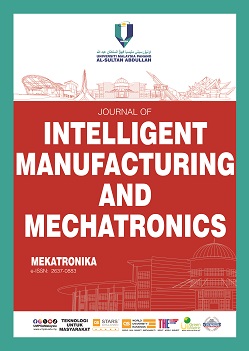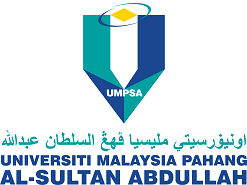Modelling Odour Profiles and Temperature Intensity of Water: A Comparative Analysis using Case-Based Reasoning and K-Nearest Neighbours
DOI:
https://doi.org/10.15282/mekatronika.v6i2.10729Keywords:
Water, Odour-profile, E-nose, Case Based Reasoning, K-nearest neighboursAbstract
Water, a vital resource for human life and global economic activities, prompts ongoing water quality studies in Malaysia due to excessive usage. This study investigates Malaysia's water resources condition, focusing on identifying water through its odor profile relative to temperature intensity. Clean and pure drinking water is crucial for global human health, necessitating knowledge of water source content to mitigate health risks from water quality degradation caused by inorganic contaminants, heavy metals, and microbial pollutants. Recent interest in water quality stems from the high demand for clean water and population growth. This research employs E-Anfun, mimicking the human nose, to establish a case library profile for tap and lake water samples based on odor attributes. Using Case-Based Reasoning (CBR) and K-Nearest Neighbour (KNN), the study classifies water odor profiles and evaluates performance. The E-nose simplifies the process with gas sensors of varying odor sensitivity. Samples collected based on temperature intensity are managed using Microsoft Excel and MATLAB for normalization. CBR, utilizing four cycles, intelligently classifies by solving new problems based on prior successful solutions. KNN enhances CBR by classifying data samples based on proximity to learning data. Evaluation using a recognized confusion matrix indicates 100% accuracy, sensitivity, and specificity for CBR. For KNN, the accuracy increases with the ratio, starting at 97.056% for k=3 with a 10:90 ratio, accompanied by 84.833% sensitivity and 98.369% specificity. Both CBR and KNN successfully classify tap and lake water odour profiles.
References
[1] Baleta, J., Mikulčić, H., Klemeš, J., production, K. U.-… of cleaner, & 2019, undefined. (2019). Integration of energy, water and environmental systems for a sustainable development. ElsevierJ Baleta, H Mikulčić, JJ Klemeš, K Urbaniec, N DuićJournal of Cleaner Production, 2019•Elsevier. https://doi.org/10.1016/j.jclepro.2019.01.035
[2] Cascos, G., Barea-Ramos, J., Foods, I. M.-F.-, & 2023, undefined. (n.d.). Burn Defect and Phenol Prediction for Flavoured Californian-Style Black Olives Using Digital Sensors. Mdpi.ComG Cascos, JD Barea-Ramos, I Montero-Fernández, A Ruiz-Canales, J LozanoFoods, 2023•mdpi.Com. Retrieved May 20, 2024, from https://www.mdpi.com/2304-8158/12/7/1377
[3] Guo, Y., Zhang, B., Sun, Y., Jiang, K., Recognition, K. W.-P., & 2021, undefined. (n.d.). Machine learning based feature selection and knowledge reasoning for CBR system under big data. ElsevierY Guo, B Zhang, Y Sun, K Jiang, K WuPattern Recognition, 2021•Elsevier. Retrieved May 20, 2024, from https://www.sciencedirect.com/science/article/pii/S0031320320306087
[4] Hanif, S., Wijaya, D., Pacific, W. W.-2021 I. A., & 2021, undefined. (n.d.). K-nearest neighbors algorithm for prediction shelf life of rice based on electronic nose dataset. Ieeexplore.Ieee.OrgS Hanif, DR Wijaya, W Wikusna2021 IEEE Asia Pacific Conference on Wireless and Mobile (APWiMob), 2021•ieeexplore.Ieee.Org. Retrieved May 20, 2024, from https://ieeexplore.ieee.org/abstract/document/9435229/
[5] Hirai, M., … J. G. S. D. and the, & 2019, undefined. (n.d.). Toward Universal access to basic and safely managed drinking water: remaining challenges and new opportunities in the era of sustainable development goals. Wiley Online LibraryM Hirai, J GrahamWater and Sanitation‐Related Diseases and the Changing Environment, 2019•Wiley Online Library. Retrieved May 20, 2024, from https://onlinelibrary.wiley.com/doi/pdf/10.1002/9781119415961#page=16
[6] Ismail, Z., Challenges, Y. G.-G., & 2021, undefined. (2021). Fog‐to‐Water for Water Scarcity in Climate‐Change Hazards Hotspots: Pilot Study in Southeast Asia. Wiley Online LibraryZ Ismail, YI GoGlobal Challenges, 2021•Wiley Online Library, 5(5). https://doi.org/10.1002/gch2.202000036
[7] Jones, L., Kong, D., Tan, B., Sustainability, P. R.-, & 2021, undefined. (n.d.). Non-revenue water in Malaysia: Influence of water distribution pipe types. Mdpi.ComLJN Jones, D Kong, BT Tan, P RassiahSustainability, 2021•mdpi.Com. Retrieved May 20, 2024, from https://www.mdpi.com/2071-1050/13/4/2310
[8] Khan, N., Fahad, S., … M. N.-A. at S., & 2020, undefined. (2020). Analysis of Livelihood in the World and Its Impact on World Economy. Papers.Ssrn.ComN Khan, S Fahad, M Naushad, S FaisalAvailable at SSRN 3717265, 2020•papers.Ssrn.Com. https://doi.org/10.2139/ssrn.3717265
[9] Mishra, B. K., Kumar, P., Saraswat, C., Chakraborty, S., Gautam, A., & Smardon, C. (2021). Water Security in a Changing Environment: Concept, Challenges and Solutions. https://doi.org/10.3390/w13040490
[10] Mohtar, W., Maulud, K., … N. M.-E., & 2019, undefined. (n.d.). Spatial and temporal risk quotient based river assessment for water resources management. Elsevier. Retrieved May 20, 2024, from https://www.sciencedirect.com/science/article/pii/S0269749118340806
[11] Mridha, G., Hossain, M., … M. U.-J. of W. and, & 2020, undefined. (n.d.). Study on availability of groundwater resources in Selangor state of Malaysia for an efficient planning and management of water resources. Iwaponline.ComGC Mridha, MM Hossain, MS Uddin, MS MasudJournal of Water and Climate Change, 2020•iwaponline.Com. Retrieved May 20, 2024, from https://iwaponline.com/jwcc/article-abstract/11/4/1050/70132
[12] Naqiuddin, M., Ibrahim, A., Najib, M. S., & Daud, S. M. (2020). Correlation Investigation of Odour-Profile and Temperature Intensity. Journal.Ump.Edu.MyMNA Ibrahim, MS Najib, SM DaudMEKATRONIKA, 2022•journal.Ump.Edu.My, 4, 48–57. https://doi.org/10.15282/mekatronika.v4i2.8943
[13] Park, S. Y., Kim, Y., Kim, T., Tae, |, Eom, H., Soo, |, Kim, Y., Ho, |, Jang, W., Kim, S. Y., & Jang, H. W. (2019). Chemoresistive materials for electronic nose: Progress, perspectives, and challenges. Wiley Online LibrarySY Park, Y Kim, T Kim, TH Eom, SY Kim, HW JangInfoMat, 2019•Wiley Online Library, 1(3), 289–316. https://doi.org/10.1002/inf2.12029
[14] Praveena, S., Aris, A., … Z. H.-J. of E., & 2024, undefined. (n.d.). Drinking water quality status in Malaysia: a scoping review of occurrence, human health exposure, and potential needs. Nature.ComSM Praveena, AZ Aris, Z Hashim, JH HashimJournal of Exposure Science & Environmental Epidemiology, 2024•nature.Com. Retrieved May 20, 2024, from https://www.nature.com/articles/s41370-023-00585-3
[15] Rasekh, M., Properties, H. K.-I. J. of F., & 2021, undefined. (2021). E-nose coupled with an artificial neural network to detection of fraud in pure and industrial fruit juices. Taylor & Francis, 24(1), 592–602. https://doi.org/10.1080/10942912.2021.1908354
[16] Sharma, A., Karki, E., Eriyagama, N., Shrestha, G., Jeuland, M., Bharati, L., Sharma, A., Karki, E., Eriyagama, N., Shrestha, G., Jeuland, M., & Bharati, L. (2020). Whose river is it? An assessment of livelihood and cultural water flow requirements for the Karnali basin. Academia.EduA Sharma, E Karki, N Eriyagama, G Shrestha, M Jeuland, L BharatiEcology & Society, 2020•academia.Edu. https://doi.org/10.5751/ES-11763-250322
[17] Tan, J., Agriculture, J. X.-A. I. in, & 2020, undefined. (n.d.). Applications of electronic nose (e-nose) and electronic tongue (e-tongue) in food quality-related properties determination: A review. ElsevierJ Tan, J XuArtificial Intelligence in Agriculture, 2020•Elsevier. Retrieved May 20, 2024, from https://www.sciencedirect.com/science/article/pii/S2589721720300180
[18] Viejo, C., Fuentes, S., Godbole, A., … B. W.-S. and A. B., & 2020, undefined. (n.d.). Development of a low-cost e-nose to assess aroma profiles: An artificial intelligence application to assess beer quality. ElsevierCG Viejo, S Fuentes, A Godbole, B Widdicombe, RR UnnithanSensors and Actuators B: Chemical, 2020•Elsevier. Retrieved May 20, 2024, from https://www.sciencedirect.com/science/article/pii/S0925400520300356
[19] Zahari, M. F., Najib, M. S., Daud, S. M., Mohamad, M., & Majid, N. F. H. (2022). Performance Measure of Case Based Reasoning (CBR) for Ammonia in Water by Specific Concentration. Lecture Notes in Electrical Engineering, 842, 531–541. https://doi.org/10.1007/978-981-16-8690-0_48
[20] Zhuang, Y., Fu, Y., Huang, S., Commun, S. G.-B. E., & 2023, undefined. (2023). The application of intelligent sensors in medical research: a review. Tmrjournals.ComY Zhuang, Y Fu, S Huang, S GongBioMed Eng Commun, 2023•tmrjournals.Com, 2(3), 17. https://doi.org/10.53388/BMEC2023017
Downloads
Published
Issue
Section
License
Copyright (c) 2024 The Author(s)

This work is licensed under a Creative Commons Attribution-NonCommercial 4.0 International License.




